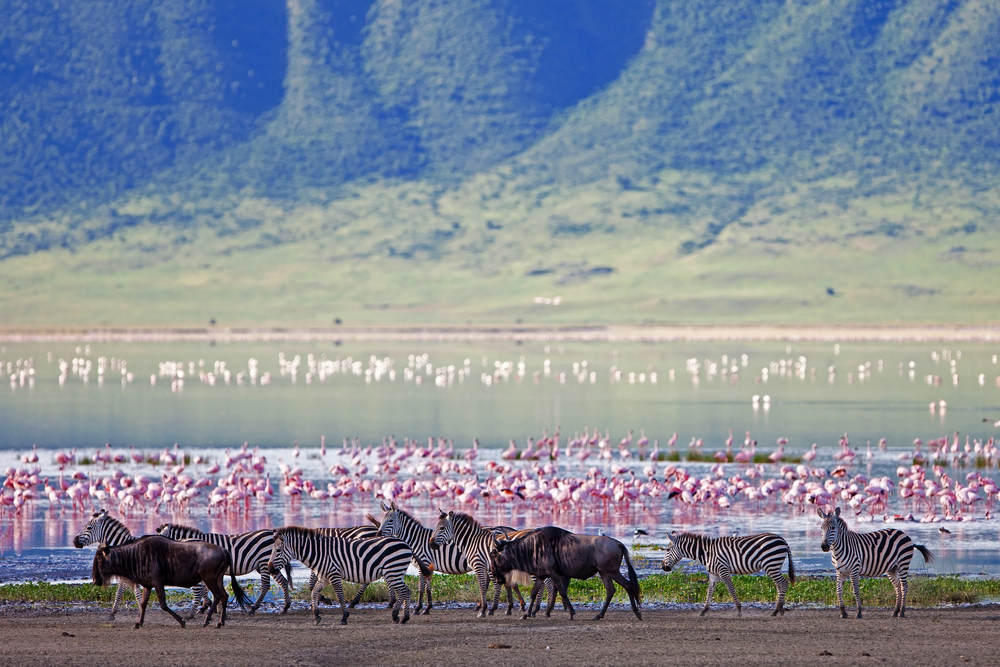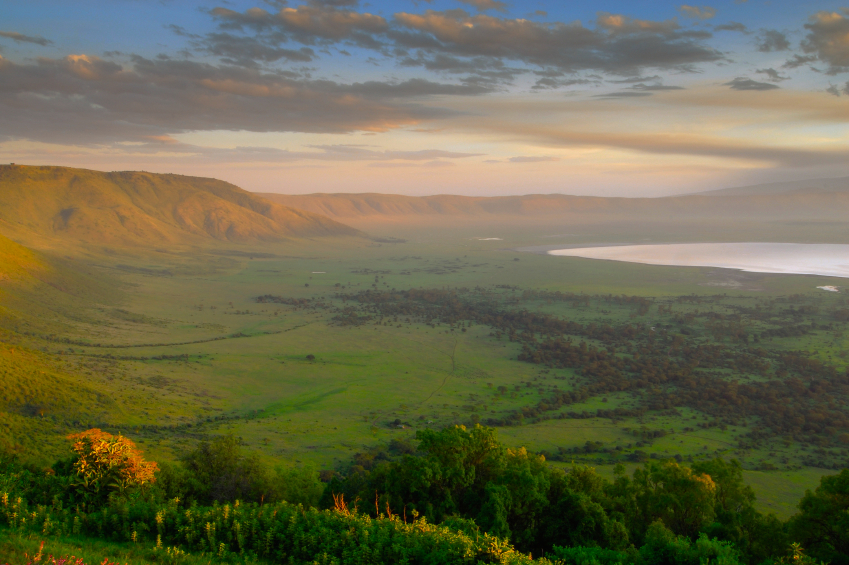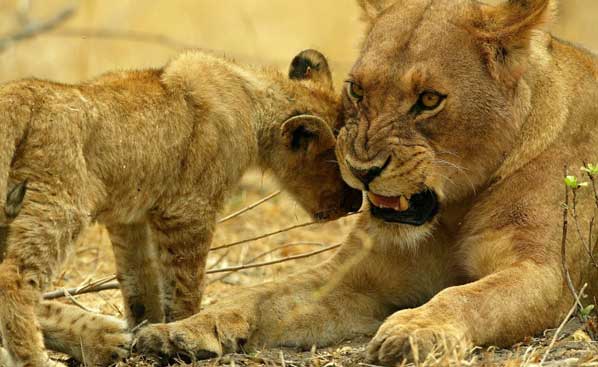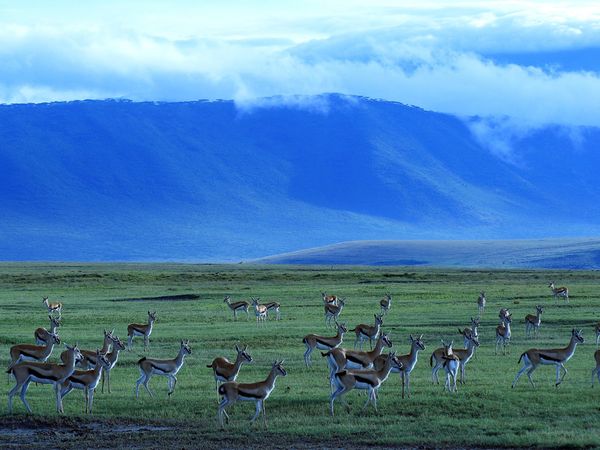

A visit to Olduvai Gorge on the East African Rift Valley is an opportunity to visualize how human beings interact with nature during the process of living. Visitors can do that by understanding human development processes at the Gorge. For example, the ancient 1.9 Million years old human fossils in the area imply that the area is volcanic. The area erupted those years and volcanic ash buried the people in the area quickly. The quick burial prevented scavengers from eating or bacterial from decaying human bones. It is a lesson that volcanoes along the East African Rift Valley are very old and they occur under high pressure.
Travelers can visit the live volcano at Oldonyo Lengai also called Mountain of God to witness the East African Valley environment characterized by eruptions under pressure. Nearby is Lake Natron which is the prime breeding site for flamingos in East Africa.
The environment at Ngorongoro Crater is a practical example of how people co-exist with wildlife and the environment in general in modern times. For example, visitors get opportunities at Ngorongoro to become part of the so called ‘dangerous animals’ lions, buffalos, elephants and even black rhinos. The Maasai people in the area have been living side by side with the wild animals in the area for many years. Only four hours in the Ngorongoro crater is adequate to acquire such experience. But of course it is always better to spend more time in the wilderness.
The crater itself has an intriguing history. Geologists inform unlike Oldonyo Lengai, Ngorongoro is not crater but a caldera. It has been formed when what was to be one the biggest volcanic eruptions failed. As a result, the land on what would be a crater collapsed to form the Ngorongoro Crater or rather caldera. People continue to call Ngorongoro a crater rather than caldera.
Serengeti adjoins Ngorongoro. In fact, ecologically Serengeti plains include the Ngorongoro area. It is on the Serengeti plains where visitors have an opportunity to become part of what can be called a perfect natural environment. It is the environment whereby different animals co-exist in hundreds, thousands and millions. Serengeti is the place where animals share the environment equitably in order to exist. For example, zebras share same grasses with wildebeest and dung beetles recycle animal dung. Otherwise, the grass will be covered by dung and become unable to grow. Grazers will die because there would be no grasses.
The Lions of Serengeti are friendly to tourists. They often come close to the tourist vehicles and lie beside vehicles as if posing for pictures. The lions would stare, look beyond and yawn while lying next to the tourist vehicles.
Apart from the spectacular wildebeest migration phenomenon it fascinates to watch the lions and leopards of the Serengeti hunt. The vast plains provide clear view of watching such events for an extended period. To eat and to be eaten in the wild is important in order to maintain ecological balance in the environment. Otherwise, too many grazers will finish the grass and they would eventually starve to death.
There is opportunity to see pythons in Tarangire National Park. But visitors cannot miss the opportunity to relate to the usually oversize lions, elephants and baobab trees which are characterize the park.
In particular, visitors are able to meet Maasai people and observe preserved culture at their traditional homes. Visitors can learn various living techniques like how to live in areas with limited quantities of water. Programs can be organized such that visitors participate in Maasai traditional ceremonies.
All this is done by tour guides that are trained to provide professional and personalized services. Tourists travel in luxury vehicles and accommodated in lodges that cater for quality exclusive tours. The aim is to enable visitors to enjoy their holidays in exclusive homes in the form of nature away from their homes.











